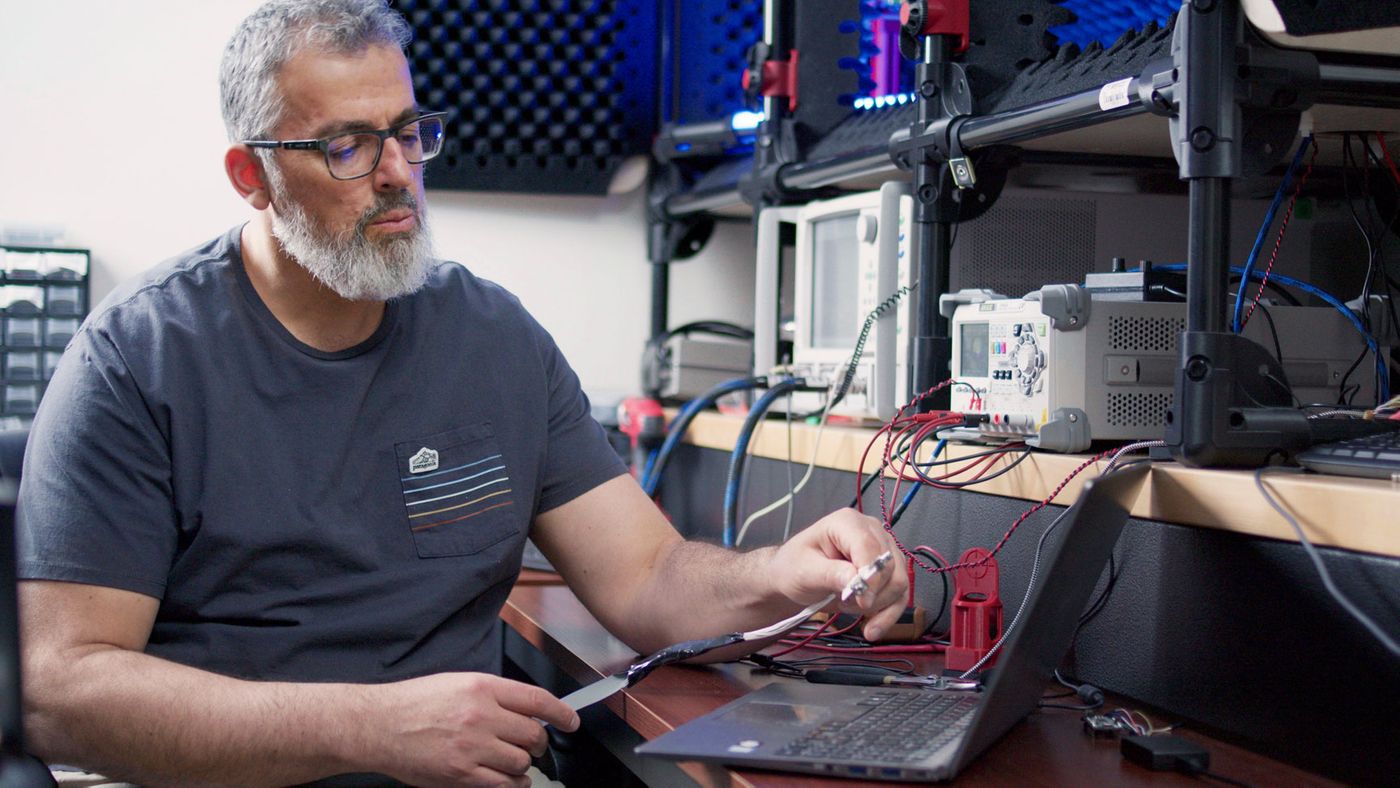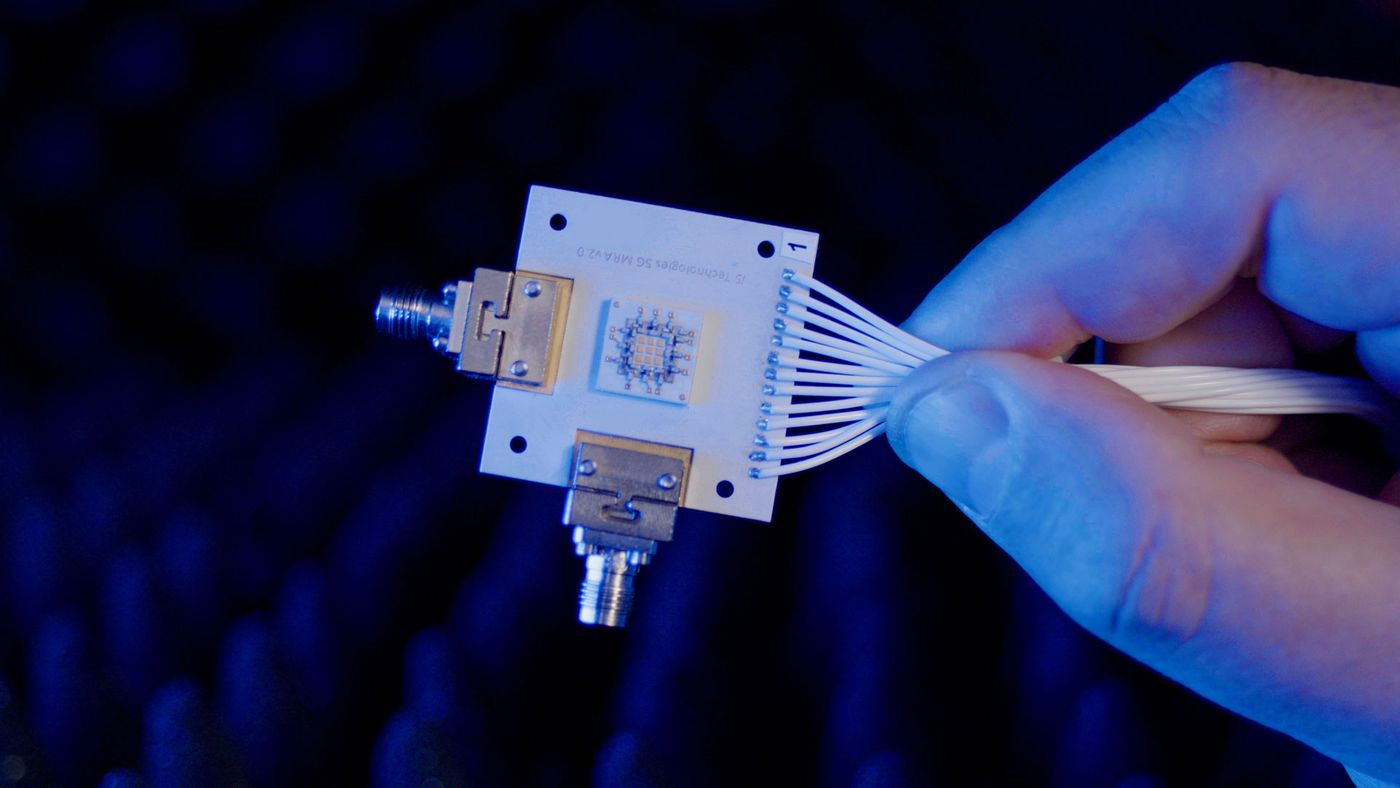New Multi-functional Reconfigurable Antenna Could Transform Telecom Industry
A professor of electrical engineering at Utah State University (USU) has developed a new type of antenna known as a Multi-Functional Reconfigurable Antenna (MRA) capable of locating a wireless signal’s frequency and direction, whereas traditional antennas used for over 100 years are designed to listen for signals in all directions.
Dr. Bedri Cetiner, who is a Utah State University professor of electrical engineering, with his multifunctional reconfigurable antenna (MRA) capable of locating a wireless signal’s frequency and direction. (Credit: Matt Jensen/Utah State Univeristy)
Dr. Cetiner's MRA technology is licensed to Verana Networks, who recently announced that Verizon will conduct trials of the new antenna for their 5G base station and holds the potential to potentially reduce energy consumption and allow better usage of the electromagnetic spectrum.
“5G allows for higher frequency and more bandwidth, which translates to more data and more users on a network,” said Dr. Bedri Cetiner, the USU professor who invented the new antenna. “We are no longer in the Marconi era, but one of directive and steerable communication.”
Verana Networks, who holds a license for Dr. Cetiner's MRA technology, recently announced that Verizon will conduct trials of the new antenna for their 5G base station. (Credit: Matthew Jensen/Utah State University)
This recent breakthrough comes after Dr. Cetiner received a patent in 2022 for his new antenna and was awarded a $750,000 grant in 2018 to further develop this technology. Dr. Cetiner also founded i5 Technologies in 2014, which is stationed at Utah State University Innovation, whose primary mission is to further develop MRA systems that can be used for 5G and the Internet of Things.
“At i5 we specialize in innovation, and we are always learning,” said Dr. Cetiner. “Innovation allows me as a teacher to educate my students with the skills they need to work as the next generation of engineers. My research gives me the chance to bring my experience into the classroom. It’s all connected.”
Dr. Cetiner said potential applications for his MRA technology include education, medicine, and more, noting the MRA can decrease the lag time for both sending and receiving data.
How will this MRA technology improve 5G technology in the coming years and decades? Only time will tell, and this is why we science!
Sources: Utah State University, Utah State Today, CacheValleyDaily.com, i5 Technologies
As always, keep doing science & keep looking up!










